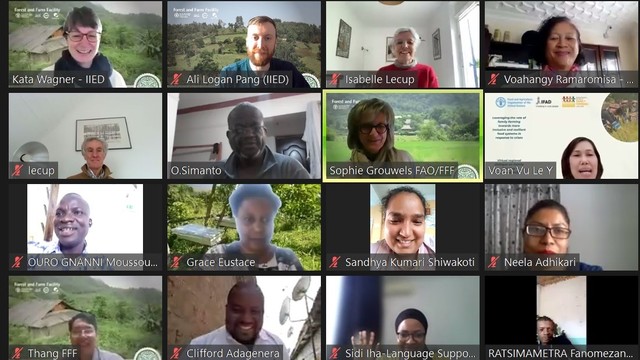A tale of two villages: community perspectives on the impact of Botswana’s trophy hunting ban
How does a trophy hunting ban affect people who live alongside wildlife? Five years following Botswana’s recently reversed ban on trophy hunting, PhD student Helen Muller reports on her impressions from six months spent in two villages speaking to local people about how the ban affected them.


Group discussion with women about their lives and how things had changed since the hunting ban (Photo: copyright Helen Muller)
In the 1990s, rural communities in Botswana were granted rights to manage land for wildlife tourism and hunting, with the proceeds of these ventures going towards community development. Through this national Community-Based Natural Resources Management (CBNRM) programme, many communities formed Community Trusts and set up partnerships with trophy hunting operators.
This enabled them to benefit from money generated through land rental payments and hunting quota fees, from jobs created, and in other less direct ways such as getting meat from hunted animals, increased transport opportunities and farming assistance.
For decades, the government of Botswana included these community-based sustainable use approaches in their national wildlife conservation policies. But in January 2014 it set a moratorium on all hunting. This move was met with widespread international support from animal welfare organisations and others opposed to trophy hunting.
Yet there is very little evidence on the impacts of such bans – not just on conservation, but also on the local communities living in or near hunting areas.
As part of my PhD project looking into the impacts of Botswana’s five-year ban, I spent six months in two rural villages in northern Botswana to find out how the decision had affected people’s lives.
How could a hunting ban affect people? It’s not all about the money…
My study focused on the villages of Phuduhudu and Ditshiping, which border Nxai Pan and Makgadikgadi Pans National Parks, and Moremi National Park respectively. In Phuduhudu, the Community Trust had failed to attract partnerships with tourism companies specialising in wildlife photography. So, when hunting was banned, it became largely defunct.
In Ditshiping, by contrast, the trust set up partnerships with three companies running high-end lodges. It also runs its own small-scale tourism ventures. After a hiatus, during the transition period from hunting to photographic tourism, the trust continues to contribute to the community through employment opportunities (even more than before), scholarships and a range of other benefits.
One might have expected contrasting views from the two villages on how the ban changed lives when it was introduced. However, people largely voiced the same concerns – and it wasn’t about the change in income to the trusts, but about there being more elephants and how they were coming much closer to the villages than before.
The most common complaint was that people were no longer able to farm successfully due to the increased presence of elephants causing high levels of crop damage by trampling crops – in some cases wiping out an entire year’s harvest.
With more elephants roaming the villages and surrounding areas, people no longer felt safe walking around or going about their daily tasks such as collecting firewood. People also raised concerns about environmental damage, with many upset by elephants destroying trees in the area.

Tree damage after two night’s foraging by an elephant in Ditshiping village (Photo: Helen Muller, CC BY-NC-SA 4.0)
Other impacts raised were the loss of jobs and the loss of a key source of free meat, which was sometimes available in substantial quantities after trophy hunts. Only a handful of people mentioned loss of income to the community organisations and the related benefits as something that had affected them.
Of the 100-plus people I spoke to, only three thought the hunting ban had been a good decision. Those that agreed with the ban being lifted felt this way because of the need to control elephant numbers. It’s important to note that trophy hunting hadn’t been killing large number of elephants. But it did seem to be deterring them from moving too far out of the protected areas – creating a buffer between protected areas and the surrounding mixed-use rural areas.
What’s more, losing this control in the movement of animals extended the effects of the ban far beyond the people and villages directly involved in trophy hunting activities, to the many who had never benefited from hunting directly. They too were now bearing increasing costs of elephant damage.
Improving and broadening the evidence base for decision making
Following a national consultation, the government of Botswana lifted the hunting moratorium in May 2019. One of the main reasons they gave was the increase in human-wildlife conflict experienced by people in many rural areas across northern Botswana.
People living in or alongside wildlife areas are the ones most affected by wildlife policy decisions yet they rarely have a voice in decision-making.
Botswana was notably atypical in holding this consultation and in acting on the views expressed by citizens affected. But if decisions about wildlife management are made by third parties, such as import bans made by other governments, as is so often the case, voices from communities that are impacted are even less likely to be heard.
With growing international calls to ban the practice of trophy hunting, improving the evidence base on its impacts is crucial to ensure decisions do not end up doing more harm than good, particularly to the people in whose hands the future of African wildlife ultimately lies.
About the author




